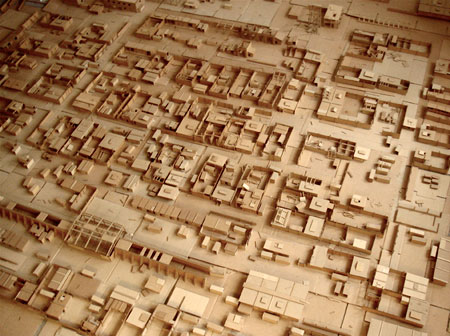(Editor’s Note: This article was written by Jessica Blank ’11)
Upon approaching the podium at Golden Auditorium in Little Hall, artist Michael Ashkin commented on the atmosphere of the lecture room, which was appropriate considering that his artwork explores spaces through various mediums.
“This is one of the most formal settings I’ve ever lectured in; very high-tech,” said Ashkin, who is an assistant professor and director of graduate studies in the Department of Art at Cornell University.
Ashkin went on to tell the audience about how he spent a decade working in the mortgage industry before switching gears to attend the School of the Art Institute in Chicago and focus his energies on art.
While he began as a painter and photographer, he quickly became interested in sculpture, working mainly with landscapes.
 |
| Michael Ashkin, “Hiding places are many, escape only one,” 2007-2008, dimensions variable, cardboard. |
“The reason I put titles on my pieces is to make additional space outside of the model itself so there are two different languages of description,” he said.
After spending time creating miniature models of landscapes, Ashkin developed an interest in the Meadowlands area of New Jersey. He created a short video that was played on three different televisions and consisted of 12 video clips of old wartime bunkers from the area.
Overall, he spent a year in the Meadowlands taking thousands of photographs for a commissioned project.
“I wanted to reproduce the photographic viewing experience as the experience of aimlessly walking around,” he said.
After finishing that project, Ashkin began working with cardboard to develop his own Utopian cities, as well as to replicate aerial landscapes in various countries. This led him to his interest in aerial views of prisons.
Ashkin showed many Google Earth satellite images and juxtaposed them with his own cardboard sculptures.
“I found Ashkin’s application of the optical perspective of photography to sculpture to be really fascinating,” said Alayna Anderson ’11.
Kendra White ’11 echoed her sentiments.
“Considering that Ashkin is motivated by romantic and Utopian ideals, the fact that he describes his work as ‘dystopic’ is interesting. The tension makes his work very compelling,” she said.
Ashkin, whose work has been widely shown both nationally and internationally, has won numerous awards, including a 2009 Guggenheim Fellowship.